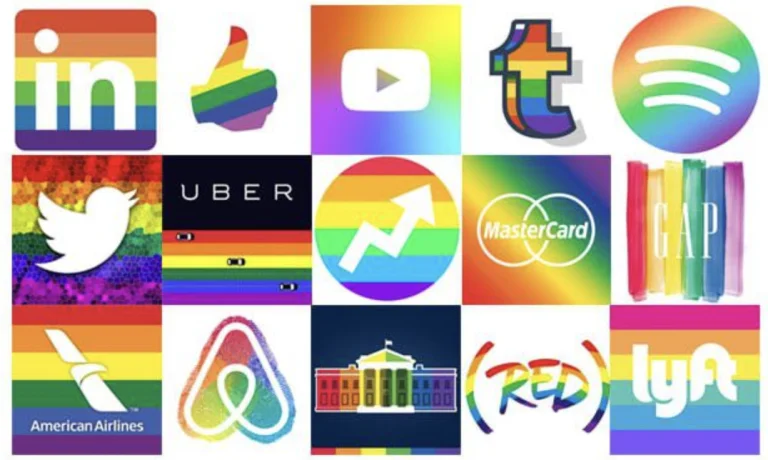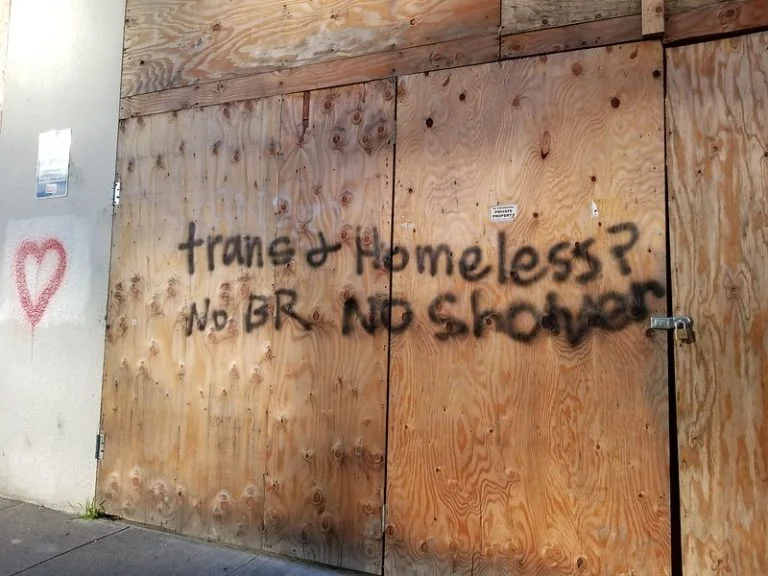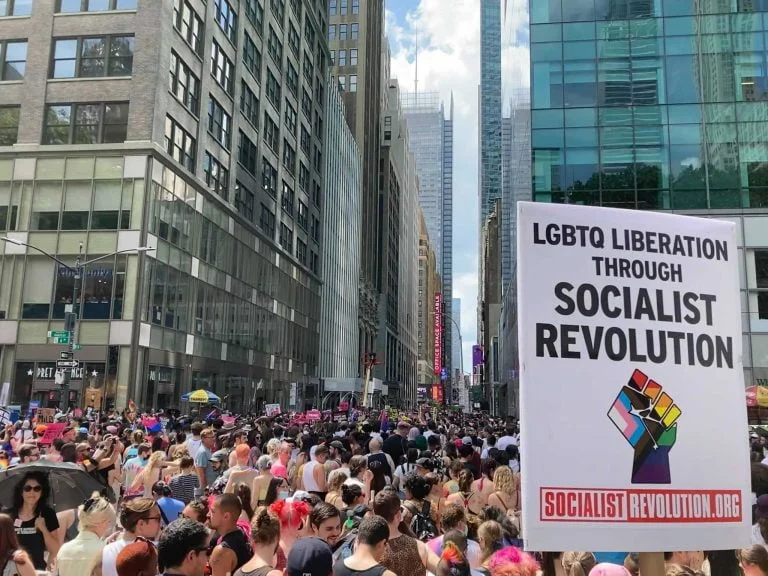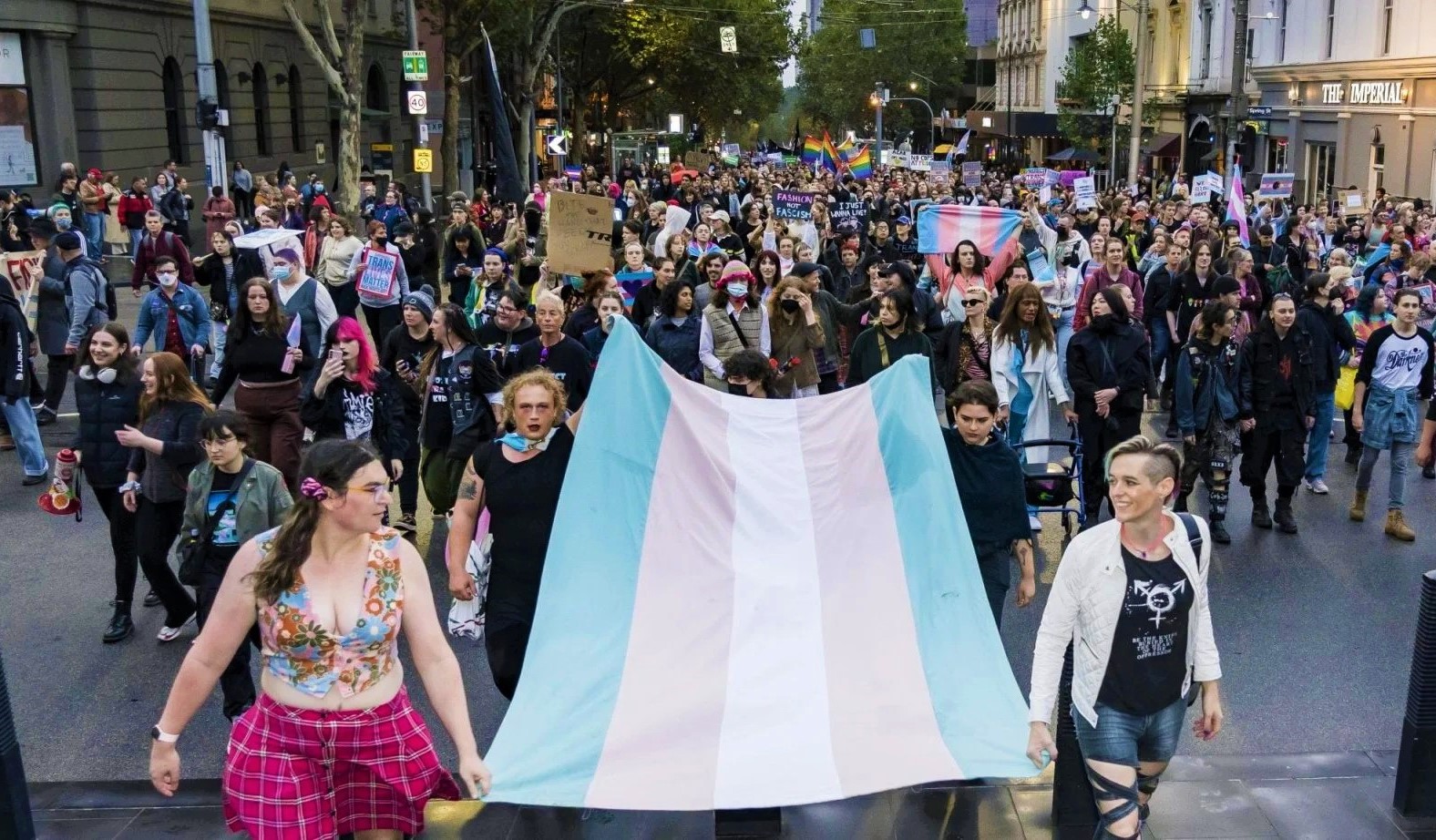In the first four months of this year, 541 anti-trans bills have been introduced across the country, including 23 at the federal level, and more than 70 have already been signed into law. This is a significant uptick in transphobic legislation from just a year ago, when 174 such bills were introduced, with 26 becoming laws.
Most of these draconian bills consist of arbitrary restrictions of transgender rights, and particularly those of trans youth. They limit access to healthcare and gender-affirming services, forbid trans people from participating in sports, and prevent them from using the restroom of the gender they identify with. These bills have been accompanied by a scaremongering campaign in the right-wing press, demonizing trans people and portraying them as dangerous predators.
The timing of this transphobic frenzy – ramped up in legislatures and in the media just as a new economic slump threatens to destabilize the country – is no accident. The ruling class is scrambling to contain a banking crisis and out-of-control inflation, and bracing for a “crash landing” into what may be a severe recession. A recent survey found that 72% of households earning less than $100,000 are already struggling to keep up with the cost of living. In lockstep with the rising misery in society, ruling-class politicians are faced with a desperate imperative to find scapegoats to divert the growing social discontent into reactionary channels.
This is why bourgeois politicians have redoubled efforts to whip up “culture war” anxieties in recent years. The rising talk of a dangerous “migrant invasion” to stir up racist fears and anti-immigrant sentiment serves the same purpose. Both are a direct response to the immediate interests of a class ruling over a crisis-ridden system.
Cheap political calculations – with reactionary consequences
 The timing of this transphobic frenzy – ramped up just as a new economic slump threatens to destabilize the country – is no accident / Image: public domain
The timing of this transphobic frenzy – ramped up just as a new economic slump threatens to destabilize the country – is no accident / Image: public domain
In addition to fomenting prejudices and pitting working-class people against each other along lines of identity and “culture,” both ruling-class parties regard the transphobic fever as a key factor in their short-term electoral calculations.
The evangelical Christian right has been a coveted segment of the Republican voter base since the end of the Civil Rights era, when open support for Jim Crow racism was no longer a viable tactic to mobilize voters. Through one reactionary crusade after another, the GOP has courted this base, finding new ways to get prejudiced voters to the ballot box, while trampling on the basic rights of one oppressed group after another.
After the end of legal segregation, abortion rights became the focal point of choice – one which has made a comeback today. Then, it was the homophobic “sodomy laws,” that criminalized same-sex relations until as late as 2003, when the last of these laws was overturned by the Supreme Court in Lawrence v. Texas. Then, same-sex marriage became the battle ground, until it, too, was federally recognized in 2015 in Obergefell v. Hodges. The new wave of transphobia is merely the latest link in the reactionary chain of polarization over gender and sexuality.
While religion is clearly on the decline in the US – just 47% of Americans belong to a church, compared to 70% in 1999 – as a segment of the electorate, religious voters are a key target of bourgeois electoral campaigns. In 2020, between 76–81% of evangelical Christians voted for Trump, according to two polls reported by Gallup. Pew Research reports that 90% of Republicans are religious, 73% say they are “absolutely certain” about their belief in god, and 62% say they pray daily. Even among Democrats, 83% claim to hold religious belief, though just 47% consider it “very important” in their lives. In this way, centuries-old prejudices and ancient superstitions find their way into 21st century bourgeois electoral schemes.
Seeing the transphobic bandwagon as a cheap way to carve out a reliable base among a backward segment of voters, Republican lawmakers have been falling over each other in the race to join the onslaught. But there are two cynical sides to the “culture war” coin. While one capitalist party drives the attack, politicians across the aisle greedily rub their hands together with calculations of their own.
This was clearly demonstrated in last year’s midterms. Liberal analysts celebrated the Supreme Court’s repeal of Roe v. Wade as a timely measure that brought more Democratic voters to the polls. To this day, the New York Times hails state-level ballot measures on abortion rights as an initiative that can “energize 2024 turnout among Democratic voters” and one that may even “generate enough Democratic turnout to help President Biden win” important swing states. Never mind that Biden’s party has never taken any serious measure to defend, let alone codify, universal abortion access in the US.
 The White House is using the same methods as corporations which amount to nothing beyond a “rainbow washed” logo and a few milquetoast phrases about equality / Image: fair use
The White House is using the same methods as corporations which amount to nothing beyond a “rainbow washed” logo and a few milquetoast phrases about equality / Image: fair use
For Democrats, the useful specter of the “greater evil” is a welcome foil for their campaigns. Their calculations simply run in reverse, betting that their pro-LGBTQ lip service will help their chances in 2024, while doing absolutely nothing in practice to defend trans rights or living conditions. As the primary party of Wall Street – the most reliable political representative of the US ruling class – the Democrats attempt to put a “progressive” veneer on their reactionary policies. They are the enemies of the workers, but for them, the “culture war” is an opportunity to divert attention from their anti-worker onslaught. Their approach is identical to the marketing campaigns of corporations whose profits are based on the brutal exploitation of millions of workers, but that use rainbow logos to show off their progressive credentials during Pride month with no intention beyond selling a product.
Likewise, with Biden’s next presidential campaign fast approaching, the White House decided to proclaim an official “Transgender day of visibility” at the end of March. In a blend of patriotism and liberal sentimentality, it declared that “transgender Americans shape our nation’s soul” and called on Americans to make sure that “every child knows that they are made in the image of God, that they are loved,” ending with an appeal “to join us in lifting up the lives and voices of transgender people throughout our nation.”
This flowery language is as empty as it is divorced from the reality of trans struggle under capitalist conditions of misery. The very system that Biden and the two ruling parties represent is the source of the horrific oppression that makes life increasingly impossible for trans people across the country.
Life under capitalism
As with all forms of oppression under capitalism, it’s in the material conditions of life that trans inequality stands out in clear relief. A UCLA study from 2020 found that 35% of trans people were living in poverty. According to census data from 2021, trans adults are three times more likely to go hungry. Over a quarter of trans households experience food insecurity, and 36% of trans people of color reported not having enough to eat. A smaller 2019 study by the University of Tennessee across 12 Southeastern states found that 79% of trans and gender nonconforming people reported food insecurity.
Trans people are nearly six times more likely than the rest of the population to experience homelessness at some point in their lives – 8% of trans adults, compared to 1.4% of the overall population. Many trans youth find themselves on the streets as a result of prejudice in conservative households. The 2015 US Transgender Survey (USTS), the largest study of its kind so far, polled 28,000 trans people across the US and found that 18% reported having unsupportive families.
According to data from the CDC, trans students in high school are more than nine times more likely to be homeless than their peers. Among K–12 aged youth who were out or perceived to be trans, 77% reported experiencing mistreatment of some kind; 54% reported suffering verbal harassment, 24% had been physically attacked, and 17% reported having left a school altogether because of mistreatment.
Higher rates of homelessness also stem directly from higher precarity and discrimination against trans workers on the job. Fully one of four trans workers have lost a job due to their gender identity. More than three-quarters (77%) reported taking steps such as delaying their transition, hiding their gender identity, or quitting their job to avoid mistreatment or discrimination from an employer.
 Many trans people, especially youth are forced to live on the street or to squat in abandoned buildings / Image: Quinn Dombrowski, Flickr
Many trans people, especially youth are forced to live on the street or to squat in abandoned buildings / Image: Quinn Dombrowski, Flickr
The USTS study found that 68% of trans people had not been able to change any of their official documentation – drivers’ license, passport, certificates – to reflect their gender identity. Doing so can be an expensive, time-consuming, and uncomfortable process, and some states even require proof of surgery to change the records. Having ID and paperwork that doesn’t match one’s name, identity, or appearance can in turn create problems applying for work or public services.
In a country where 112 million people struggle to afford healthcare, trans people are especially burdened by the fact that insurance monopolies deem gender-affirming care to be non-essential, forcing many to pay out of pocket for costly treatments and procedures. Though not all trans people want or need to modify their bodies to live their lives in a way that conforms to their identity, many who do want to transition simply cannot afford it.
All these material hardships, along with the prevalence of large and small manifestations of discrimination, bullying, prejudice, and harassment would be enough to weigh on anyone’s mental health. Trans people are six times more likely to suffer depression and anxiety disorders, and nine times more likely than the general population to attempt suicide. At some point in their lives, 40% of trans people have tried to end their lives, and a majority of those with unsupportive families, 54%, reported such an attempt.
Only the united working class can end oppression!
These statistics provide a small glimpse into the struggles faced by trans people – a torturous reality that goes far beyond the cynical “culture war” game played by Republicans and Democrats. Both parties are responsible for the attacks on the livelihoods of trans people. Symbolic gestures from “progressive” politicians promising “respect” and “visibility” won’t provide stable housing, healthcare, or reliable jobs with decent wages and workplace protections. The conditions of trans oppression demand a mass struggle against capitalist exploitation, not liberal phrase mongering and corporate “pinkwashing.”
On their own, trans people make up a small share of the population. The latest research suggests that 0.5–0.6% of adults and 1.4–2% of youth, or around 1.6 million people in the US identify as transgender. These figures show why class solidarity is key to fighting trans oppression. Taken as an isolated segment, trans people make up a small minority. But as part of the proletariat, trans workers number among the ranks of an immense social force with the power to transform society. The strength of the working class stems from two sources: its critical role in generating all wealth – and thereby, all capitalist profits – and its numerical superiority as the overwhelming majority of the population.
 The trans struggle is a fight for survival against the brutality of life under capitalism / Image: Socialist Revolution
The trans struggle is a fight for survival against the brutality of life under capitalism / Image: Socialist Revolution
As the data above show, the vast majority of trans people are workers who are struggling to make ends meet, just like tens of millions of others. Though there is a miniscule number of wealthy transgender “elites,” by and large, the trans struggle is a fight for survival against the brutality of life under capitalism. The fight of trans workers for basic demands of health, housing, jobs, and stability is the key to linking up with the rising tide of the class struggle. The fight against transphobic oppression can only take on a mass character by taking on a class character.
One of the more optimistic figures in the USTS research was that most trans people found support from their coworkers in the workplace. 68% of trans workers said their coworkers were supportive, while just 3% reported having unsupportive coworkers, and another 29% reported an indifferent attitude from coworkers. Mutual respect between workers of all backgrounds and identities can grow organically out of the daily experience of working side by side. It is in the experience of collective struggle that real class solidarity is forged.
Class society has produced many horrors throughout history. Though oppression is experienced in different ways by individuals, the key to ending it is collective struggle, as a class. The fight against transphobia, as with the fight against racism and sexism, can only advance through the independent organization of the working class, united by the slogan “An injury to one is an injury to all!”

